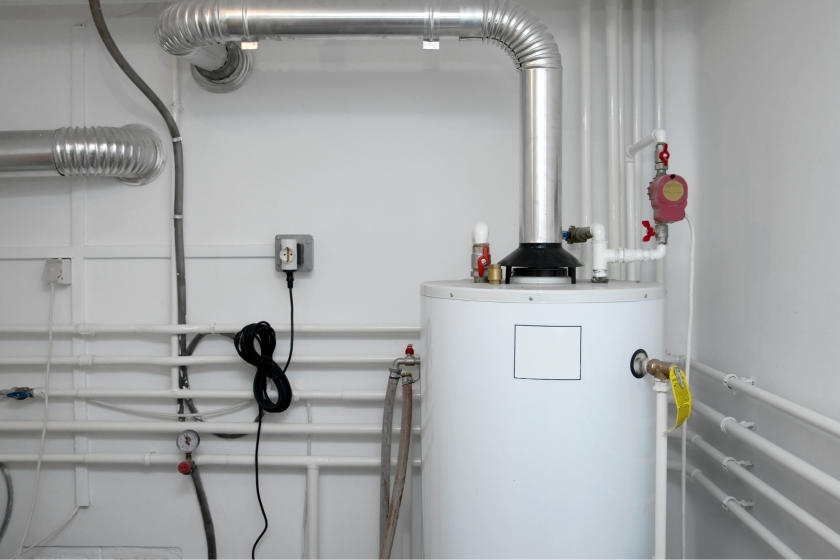Ways to Keep Your Home's Hot Water System in Good ConditionEffective Strategies for Caring for Your Home's Hot Water SystemStep-by-Step Steps to Caring for Your Home's Hot Water System
Ways to Keep Your Home's Hot Water System in Good ConditionEffective Strategies for Caring for Your Home's Hot Water SystemStep-by-Step Steps to Caring for Your Home's Hot Water System
Blog Article
They are making several good observations on the subject of Water Heater Maintenance Tips You Can't Afford to Forget as a whole in this great article directly below.

Hot water is necessary for everyday comfort, whether it's for a rejuvenating shower or washing meals. To ensure your hot water system runs successfully and lasts much longer, normal maintenance is essential. This post gives practical suggestions and understandings on exactly how to preserve your home's warm water system to stay clear of disruptions and costly repair work.
Intro
Keeping your home's warm water system might appear daunting, but with a few basic actions, you can guarantee it operates smoothly for many years to find. This overview covers every little thing from recognizing your warm water system to do it yourself upkeep ideas and recognizing when to call in expert assistance.
Relevance of Maintaining Your Hot Water System
Regular maintenance not only prolongs the life expectancy of your warm water system yet additionally guarantees it operates effectively. Overlooking maintenance can cause lowered performance, higher energy bills, and also premature failure of the system.
Indications Your Warm Water System Demands Upkeep
Knowing when your warm water system requires focus can protect against significant problems. Watch out for indications such as irregular water temperature, odd noises from the heater, or rusty water.
Purging the Water Heater
Flushing your water heater eliminates debris build-up, boosting efficiency and lengthening its life.
Monitoring and Changing Anode Rods
Anode rods avoid corrosion inside the storage tank. Checking and changing them when broken is important.
Complex Problems Requiring Specialist Aid
Instances include significant leaks, electrical troubles, or if your water heater is consistently underperforming.
Routine Specialist Upkeep Advantages
Specialist maintenance can include detailed examinations, tune-ups, and ensuring conformity with security criteria.
Checking and Adjusting Temperature Level Settings
Adjusting the temperature level setups guarantees ideal performance and security.
Do It Yourself Tips for Upkeep
You can perform a number of maintenance tasks on your own to keep your warm water system in top problem.
Checking for Leakages
Routinely examine pipelines and connections for leaks, as these can cause water damage and greater bills.
Recognizing Your Hot Water System
Before diving into maintenance jobs, it's valuable to recognize the fundamental parts of your warm water system. Usually, this consists of the water heater itself, pipes, anode poles, and temperature controls.
Regular Monthly Upkeep Tasks
Normal monthly checks can aid catch minor issues prior to they intensify.
Checking Pressure Alleviation Valves
Evaluating the pressure safety valve guarantees it works appropriately and protects against excessive stress accumulation.
Insulating Pipes
Shielding hot water pipelines lowers heat loss and can save power.
When to Call an Expert
While do it yourself maintenance is valuable, some issues need specialist knowledge.
Verdict
Normal maintenance of your home's hot water system is necessary for efficiency, longevity, and cost financial savings. By adhering to these tips and recognizing when to look for expert assistance, you can make sure a dependable supply of warm water without unforeseen disturbances.
Water Heater Maintenance Tips
Test the TPR Valve
Shut off the power and the cold-water supply valve. Place a bucket under the pipe connected to the temperature-pressure-release (TPR) valve on the top or side of the tank. (This valve opens if the tank pressure gets too high.) Lift the valve’s tab to let some water out, then let go. If water keeps flowing, drain the tank partway, unscrew the old valve with a pipe wrench, and install a new one. Check the Anode Rod
Put a hose to the tank’s drain cock and let out a few gallons of water. Now fit a 1 1/16-inch socket onto the rod’s hex head on top of the heater (or under its top plate) and unscrew the rod. If it’s less than ½ inch thick or coated with calcium, buy a new one, wrap its threads with Teflon tape, put it back in the tank, and tighten securely. Use this segmented rod if headroom above the tank is limited. Drain the Tank and Wash Out Sediment
Drain the remaining water in the tank into the bucket, then stir up the sediment on the tank’s bottom by briefly opening the cold-water supply valve. Drain and repeat until clean water comes out of the hose. Close the drain cock, refill the tank, and turn its power back on. Adjust the Temperature
Find the temperature dial on the side of the tank and unscrew its cover. Adjust the dial to 120 degrees using a flathead screwdriver. For every 10 degrees the temperature is lowered, you can expect to save up to 5 percent in energy costs. Turn the water heater off or the thermostat down to its lowest setting if you plan to be away from home for more than three days. Insulate the Pipes
Buy some self-sticking 3/8-inch-thick foam pipe insulation that matches the pipes’ diameter. Slide the foam over the hot-and cold-water pipes as far as you can reach. Insulating the cold-water pipe prevents condensation in summer. Peel the tape and squeeze the insulation closed. If the pipe is 6 inches or less from the flue, cover it with 1-inch-thick unfaced fiberglass pipe wrap. https://www.thisoldhouse.com/plumbing/21016402/how-to-maintain-a-water-heater

I was guided to that article about How to Maintain a Hot Water Heater in a Few Simple Steps from a buddy on a different blog. If you liked our blog posting kindly remember to share it. Bless you for your time. Please pay a visit to our site back soon.
Click Here Report this page